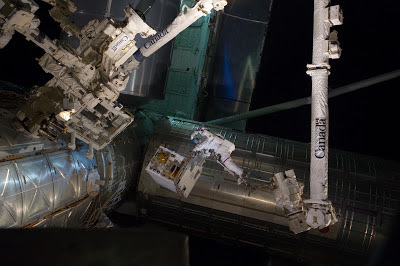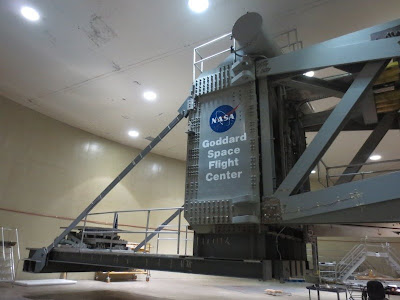I'd like to extend a vast and hearty thank you to everyone who tuned into The Space Show this past Friday, when the esteemed Dr. Livingston invited me to co-host a broadcast where we interviewed the equally-esteemed former NASA astronaut, Dr. Duane Graveline.
NASA Group #4: "The Scientists" (Duane in top center)
And what a treat! We jumped right in with questions about his first interest in bedrest as an Air Force intern at the famed Walter Reed Army Hospital, where he first seized upon going beyond regular medical corps duties to become a flight surgeon in the mid-1950s, when concerns about "zero-gravity" on future space travelers had just begun.
The good doctor remembered clearly how he selected 10 young men in 1957, and arranged for them to have nothing to do for two weeks but lay in bed at Randolph Air Force Base Hospital. Sounds easy, right? The Air Force guys initially thought that was the world on a platter! Dr. G conducted baseline tests, including tilt table tests & stress tests, and took measurements of muscle function and blood volume. Amazingly, as I know from my own experiences, these are still staples of all weightlessness simulation programs, 56 years later! They evolved to use different techniques in many cases, but the examination of these measures before and after spaceflight will always be crucial physiological markers.
But then, the troubles began, said Duane with a laugh, and his healthy sense of humor shines through. The subjects wanted to read in bed, they wanted to shave, they wanted to feed themselves... ah, the nerve! LOL! Turns out, bedrest isn't so simple -- allowances do need to be made in terms of documentting the de-conditioning of space flight, but still ensuring your testers do not grow bored or stir crazy. What's a space scientist to do?
Astronaut Hall of Fame, Florida
Determined to find something better, Graveline began water immersion experiments in the AeroMed Lab at Wright-Patterson Air Force Base, or as he termed it, a "heaven" for any research-oriented person. His demands were simple: 9x9x8 rooms full of water with viewing ports, with water maintained at a constant 95 degree temperature. Not too much to ask, right? He designed a suit for use in the tank and then -- as a former test volunteer, I love this part -- he underwent a solid week of water immersion himself!
If you tune into the Space Show recoding in the archives for no other reason, listen for his experiences in the tank -- how he survived on liquids, and the testing protocols used. An explosion of interest followed, landing him on the "Today" show, and led to his being given whole series of tests where he worked with both mice and humans in different micro-gravity simulations.
The most detailed of the sims involved specially designed pressure helmets and more complex underwater garments. And unlike bedrest where immobility is crucial, so as not to bias the data with any influence of gravity, the aquanauts were freer to read books, play games and enjoy their unique environment while Dr. Graveline conducted electrocardiograms or recorded brain waves.
LIFE Magazine Centerfold, 1959
See that dude in the picture above? Imagine floating that way for 7 days straight! That's Dr. G to the right, looking into the custom water tank. It would many years before NASA had their own similar facilities, but both water immersion and bedrest techniques would continue to be developed over the coming decades, yielding valuable data about counter-measures in space... and also vital information as to how astronauts are best rehabilitated physically when they finally return to Earth's gravity. As a result, we are able to keep our space workers living in space for longer periods of time -- but without the potential lifelong risks that many suffered in the days of the Mir space station.
I think my favorite part was where LIFE Magazine called BioAstronautics a "bizarre new science". Well, I guess now it's a bizarre middle-aged science.
To listen to the archived broadcast, please see Dr. David Livingston's web site for THE SPACE SHOW.






























































































